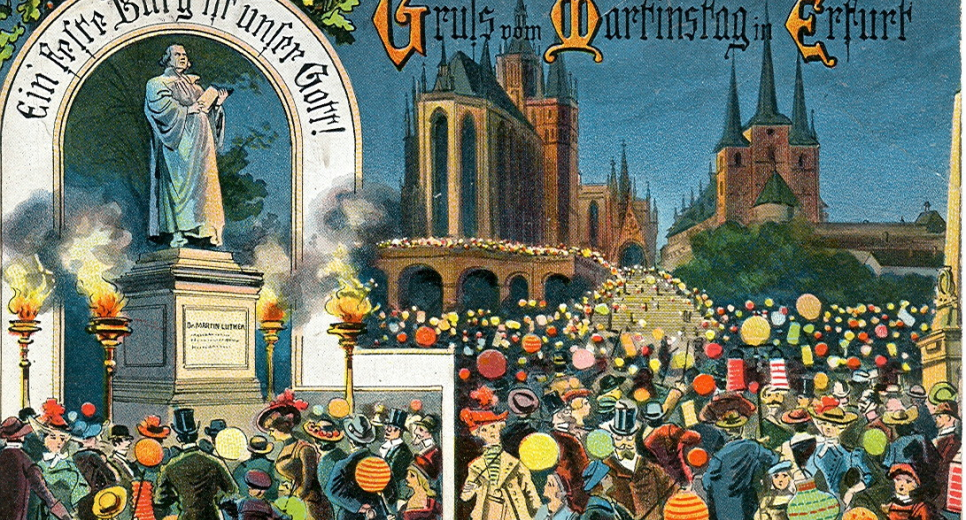
Saint Martin in folk tradition

The beliefs and folk customs of the Hungarian people are largely linked to special days. One such day - in many respects also a significant day - is 11 November, the feast of Saint Martin.
In many places this day was an important milestone in the economic year. It was the day when the cattle were driven into the barn, the shepherds gave their accounts, and it was on Martin's Day that the farmer asked the shepherd if he would stay on next year.
The tax paid at the time of settlement was sometimes referred to as Martin's tax. The shepherds in Rábagyarmat received Martin's rupees from every house, which took until the New Year to collect.
The farmer's wife in Long Pest, however, baked a strudel on Martin's Day to stretch out the mantle of Saint Martin, so that the family would not be destitute and could help others.
In 1649, Ferenc Nádasdy instructed his shepherds in a Vas County shepherds' guild regulation to keep the old customs on St. Martin's Day... "to make a penitent person a judge among themselves and swear an oath".
St. Martin was revered as the patron saint of cattle even in the Middle Ages. According to a tradition in the Répce region, a shepherd came to Szombathely to ask Martin for help during a pig famine. In his dream, the bishop gave him a white birch branch to cane the animals with, so that they would be healed. This is the origin of the folk custom known as "caning", which is particularly popular in the western counties (in Vas County: Acsád and Vép). The shepherds used to walk around the village with a freshly cut green branch, an archaic means of witchcraft, saying a toast:
"I have brought the rod of Bishop Saint Martin,
We did not start the custom, and we do not do it,
Let your animals have so much breeding,
As many branches as there are branches of the rod."
At the end of the caning, the branch was given to the farmer, and with it the cattle were driven out to pasture for the first time the following spring.
Martin's Day is a wicked, weather-beaten fortieth day, a day of pointing out and forbidding. According to the inhabitants of Göcsej, Baranya and the Mura region, on this day you should not wash, spread or plant goose eggs, because the 'carrion' will come running and kill the cattle, and instead of clothes you can spread the animal's skin.
If it is a happy Martin, it will be a hard winter, if it is a gloomy Martin, it will be a gloomy winter. A frost and drought follow the rains on Martin's Day - predicted from the weather on Martin's Day. In Baranya, it was said that the weather in March would be like Martin's Day. And because it was mostly foggy, it was said that "Martin came on a grey horse", and if it snowed, Martin rode a white horse." According to the Banat people, the weather will be like this day for 40 days, but the winter weather will be the opposite. In the same region, a beautiful, sunny Martin's Day and the warm days that precede or follow it are known as Martin's Summer. They also inferred the Christmas weather from the time of this day, for if a goose stands on ice on Martin's Day, it walks in mud on Christmas."
This is also the time when the Martin's raven, which used to live in the woods, can now be seen in the fields. On Martin's Day, it is customary to eat goose, because "he who does not eat goose is hungry all year round", or as they say in Zalalövő: "he who does not eat goose on Martin's Day may eat anything, but he is still hungry." The origin of the eating of geese on Martin's Day is a legend. Martin, when he learned that he was to be elected bishop, hid in the goose pen, but the gnawing of the animals betrayed him. He then accepted the bishopric at the people's request.
The breastbone of the goose he had eaten showed what the winter would be like. It was believed that a white breastbone foretold snow and rain, a reddish brown one foretold hard cold.
A Martin's Day goose was also a good thing to send to the priest. But if you had to send a goose, you sent the hindquarters with the least meat. Hence our word 'bishop's morsel'. In the 18th century, the back of the goose was also called a candle-holder, because it was on Martin's Day that the first candle, lamp or pilaf was lit in the evening in a village or farmhouse.
They washed down the goose-feast with a Martin's glass filled with new wine, which had been matured by that day, and tasted the harvest, because "Martin is the judge of wine." In the Middle Ages, the wine consumed at this time was considered a holy medicine with healing properties in Hungary. On Martin's Day, where he is the patron saint of the church, and in many other places, a farewell party is held.
Proverbs also preserve the memory of Bishop Martin. "Many a Martin's goose has passed since then", they say, to express the fact that it was a long time ago. A fat man is as fat as Saint Martin's goose". If a thing is of use to more than one, it is of use to more than one, 'it is as good for the common good as the grammar of Martin', so the proverb goes.
The name of villages, towns and churches are also named after him. Kádár, tapping, weaving - patron saint of guilds. He was also often given as a Christian name, especially in the region of Kalotaszeg. On Martin's Day, the following greeting was used to greet the celebrated:
"To a glorious evening
To the name of many Saint Martyrs.
We also therefore honour,
We come to bless thee.
Let your star shine,
Till the hour of your end comes.
Run to heaven at last,
To the host of saints
We wish you good times
And many years to come
To make your life merry
"And renew you among us."
Many a time may your name-day come,
Happy hour, happy hour
With thy fair and gracious house
And with all thy offspring."
Our folk festivals and traditions have no number. We can preserve the memory of Saint Martin if we take care that the customs and traditions associated with his feast day, which express the love and respect people have for him, are not forgotten.
*** Translated with www.DeepL.com/Translator (free version) ***
